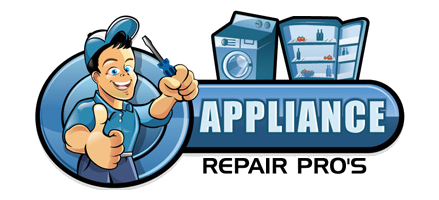Port St Lucie Washing Machine Repair 772-501-9870
A washing machine (laundry machine, clothes washer, or washer) is a home appliance used to wash laundry. The term is mostly applied to machines that use water as opposed to dry cleaning (which uses alternative cleaning fluids, and is performed by specialist businesses) or ultrasonic cleaners. The user adds laundry detergent, which is sold in liquid or powder form, to the wash water.
Washing Machine Repair in Port St Lucie providing outstanding service, fast turn arounds, and affordable pricing. Our technicians and service people have many years of experience servicing Washing Machines. Our Washing Machine repair team is extremely qualified and can handle the most technical Washing Machine repair jobs.
Contact us today and see the difference!
Washing Machine repair is a very sensitive task involving Hot/Cold water, electrical connections, and electronic control parts. Your Washing Machine should always be repaired by a qualified technician. The simplest things can make a Washing Machine unrepairable. We can fix most mistakes made by others, although there's the chance that negligence can destroy a Washing Machine.
Contact a Washing Machine Repair Specialist 772-501-9870
Washing Machine Repair Brands Serviced:
- Whirlpool
- GE General Electric
- Frigidaire
- Electrolux
- Maytag
- Kitchenaid
- Jenn Aire
- Sub Zero
- Wolf
- Thermador
- Kenmore
- Sears
- Samsung
- LG
- Amana
Wash cycles

German laundry centrifuge to extract water from laundry. The advent of automatic washing machines with spin cycles made such specialized appliances largely obsolete by the 1970s.
The earliest washing machines simply carried out a washing action when loaded with clothes and soap, filled with hot water, and started. Over time machines became more and more automated, first with very complex electromechanical controllers, then fully electronic controllers; users put clothes into the machine, select a suitable program via a switch, start the machine, and come back to remove clean and slightly damp clothes at the end of the cycle. The controller starts and stops many different processes including pumps and valves to fill and empty the drum with water, heating, and rotating at different speeds, with different combinations of settings for different fabrics.
Washing
Many front loading machines have internal electrical heating elements to heat the wash water, to near boiling if desired. The rate of chemical cleaning action of the detergent and other laundry chemicals increases greatly with temperature, in accordance with the Arrhenius equation. Washing machines with internal heaters can use special detergents formulated to release different chemical ingredients at different temperatures, allowing different type of stains and soils to be cleaned from the clothes as the wash water is heated up by the electrical heater.
However, higher-temperature washing uses more energy, and many fabrics and elastics are damaged at higher temperatures. Temperatures exceeding 40 °C (104 °F) have the undesirable effect of inactivating the enzymes when using biological detergent.[citation needed]
Many machines are cold-fill, connected to cold water only, which they heat to operating temperature. Where water can be heated more cheaply or with less carbon dioxide emission than by electricity, cold-fill operation is inefficient.
Front loaders need to use low-sudsing detergents because the tumbling action of the drum folds air into the clothes load that can cause over-sudsing and overflows. However, due to efficient use of water and detergent, the sudsing issue with front-loaders can be controlled by simply using less detergent, without lessening cleaning action.
Rinsing
Washing machines perform several rinses after the main wash to remove most of the detergent. Modern washing machines use less water due to environmental concerns; however, this has led to the problem of poor rinsing on many washing machines on the market,[99] which can be a problem to people who are sensitive to detergents. The Allergy UK website suggests re-running the rinse cycle, or rerunning the entire wash cycle without detergent.[100]
In response to complaints, many washing machines allow the user to select additional rinse cycles, at the expense of higher water usage and longer cycle time.
Spinning
Higher spin speeds, along with larger tub diameters, remove more water, leading to faster drying. On the other hand, avoid ironing can be obtained not using spin cycle in the washing machine.
If a heated clothes-dryer is used after the wash and spin, energy use is reduced if more water has been removed from clothes. However, faster spinning can crease clothes more. Also, mechanical wear on bearings increases rapidly with rotational speed, reducing life. Early machines would spin at only 300 rpm and, because of lack of any mechanical suspension, would often shake and vibrate.
In 1976, most front loading washing machines spun at around 700 rpm, or less.[citation needed]
Separate spin-driers, without washing functionality, are available for specialized applications. For example, a small high-speed centrifuge machine may be provided in locker rooms of communal swimming pools to allow wet swimsuits to be substantially dried to a slightly damp condition after daily use.
Maintenance wash
Many home washing machines use a plastic, rather than metal, outer shell to contain the wash water; residue can build up on the plastic tub over time. Some manufacturers advise users to perform a regular maintenance or "freshening" wash to clean the inside of the washing machine of any mold, bacteria, encrusted detergent, and unspecified dirt more effectively than with a normal wash.[citation needed]
A maintenance wash is performed without any laundry, on the hottest wash program if there is a heater,[101] adding substances such as white vinegar, 100 grams of citric acid, a detergent with bleaching properties, or a proprietary washing machine cleaner. The first injection of water goes into the sump[102] so the machine can be allowed to fill for about 30 seconds before adding cleaning substances.


